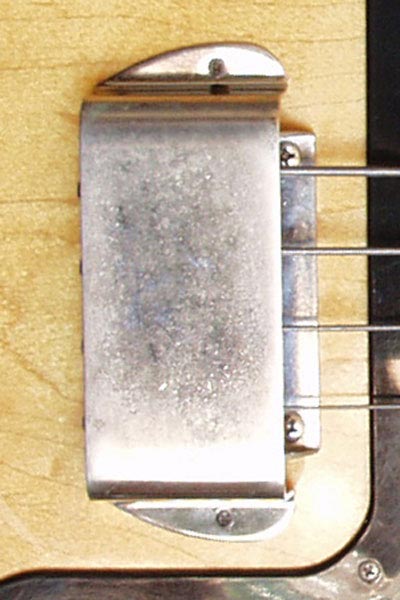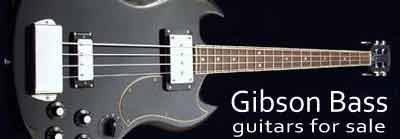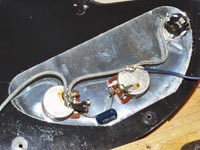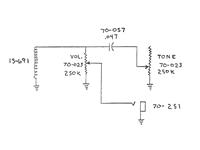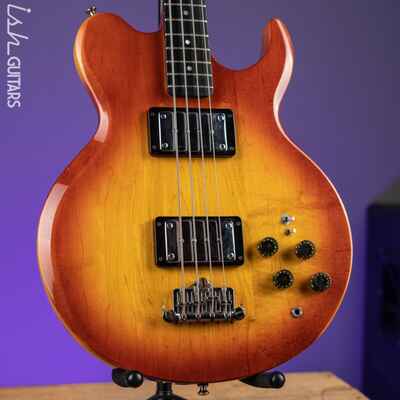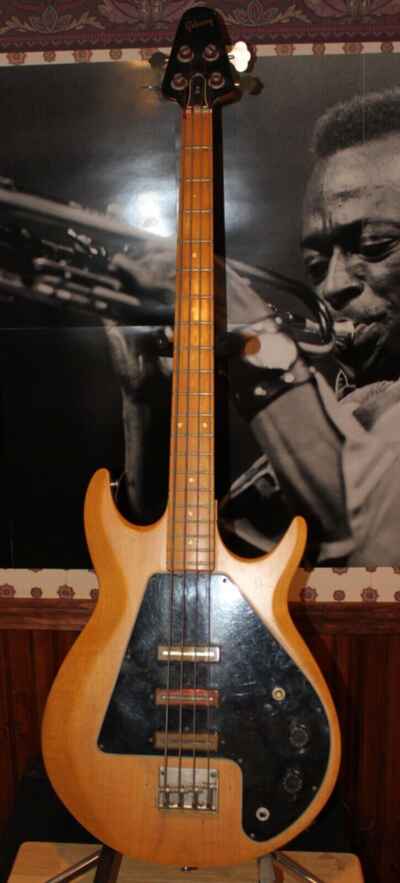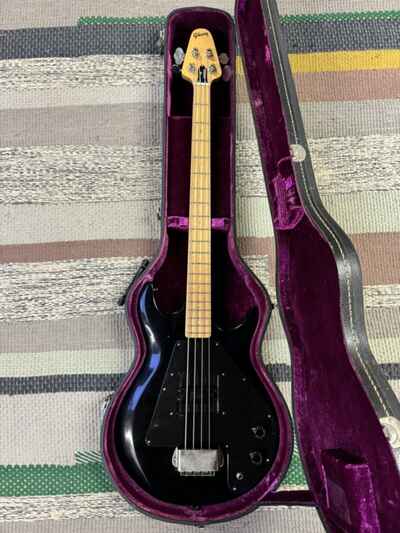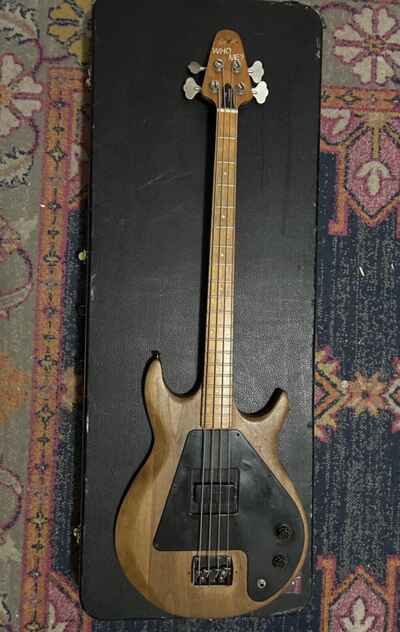• Solid three-piece maple body • One-piece maple neck • 34 1/2 inch scale • One moveable single-coil pickup
The model shown here is a 1977 Gibson Grabber in Maple Gloss finish. This finish was only introduced in 1977, and in just small numbers: 181 instruments between 1977-79 (see Gibson Grabber shipping totals). As the finish name implies, this is a maple-bodied bass with a clear gloss nitrocellulose finish; the majority of natural Grabbers used alder with a satin finish. These satin Grabbers cost less as a result ($379 vs $429 in January 1977, more Grabber bass prices here).
This Grabber is a fairly typical example. Hardware and pickups are all standard mid seventies Gibson bass fare: the Grabber sliding pickup, Schaller BM tuning keys, Grabber/G3 metal-plate bridge, with cover speed knobs and model-designated truss-rod cover.
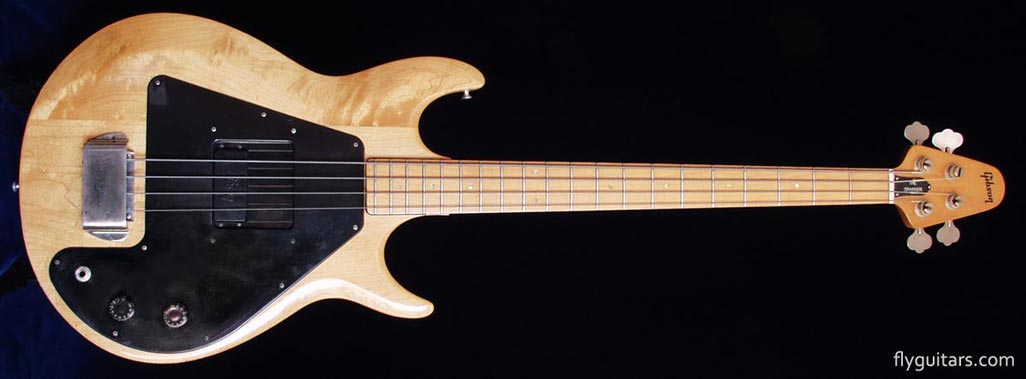
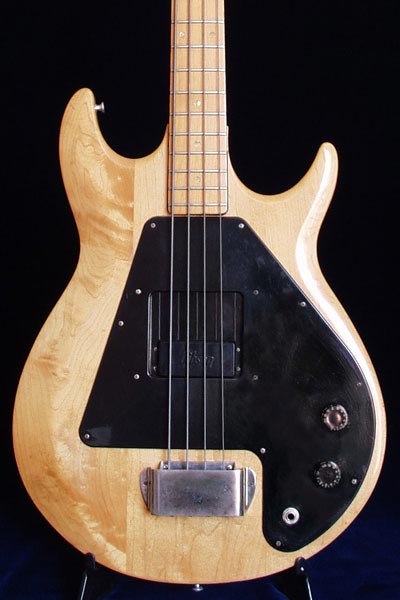
Grabbers had either alder or maple bodies, and sometimes it can be hard to tell the difference. This bass, however has a maple body; easily identified by the heavy figuring on the left hand piece as seen in this picture.
This bass is fitted with one
Grabber sliding pickup and a simple
plate bridge with cover. The Scratchplate is one-ply black plastic.
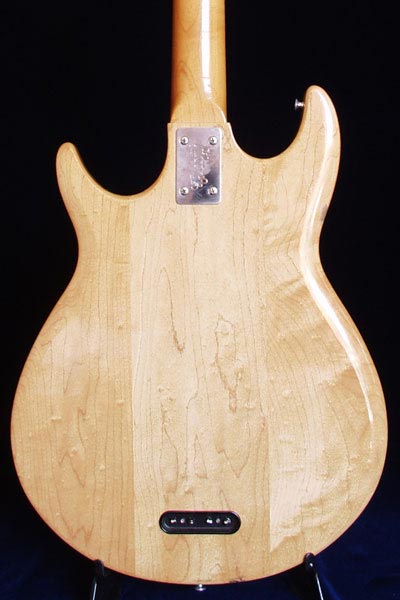
Another characteristic of maple is it's weight; it is a dense wood; but combined with a bolt-on neck, one with lots of 'snap'; a very bright sounding bass especially in comparison to many older Gibson models. The Grabber was the first Gibson-branded bass to have a bolt-on neck. The neck plate is engraved with the Gibson logo, and the words 'made in U.S.A.' (have a close up look at a
Grabber neckplate).
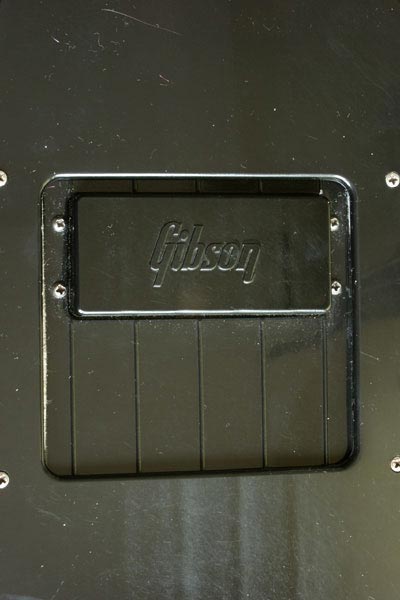
The
Gibson Grabber sliding pickup. The strings have been removed to show the Gibson logo on the pickup. This sliding pickup is attached to the lower plate, which sits in a shallow body route, allowing it to be positioned in either the bridge or neck position, and anywhere inbetween.
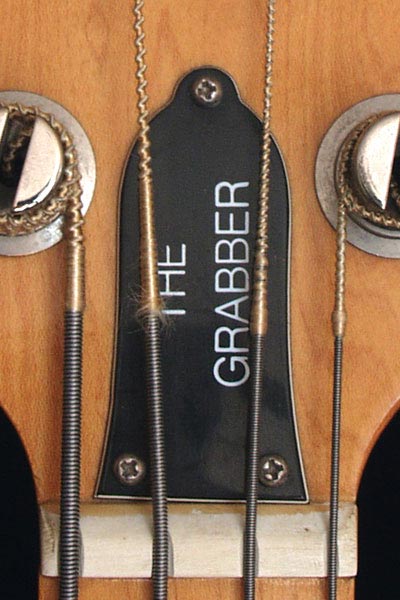
The truss rod cover is marked 'THE GRABBER'. Note that it has three screws, rather than the usual two. The truss rod itself is typical of any Gibson bass with a 5/16" nut for neck adjustments.
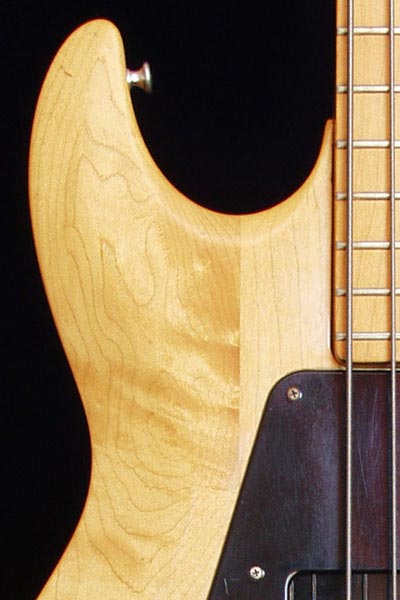
Maple gloss is clear; a finish that shows the beautiful grain patterns / flaming.
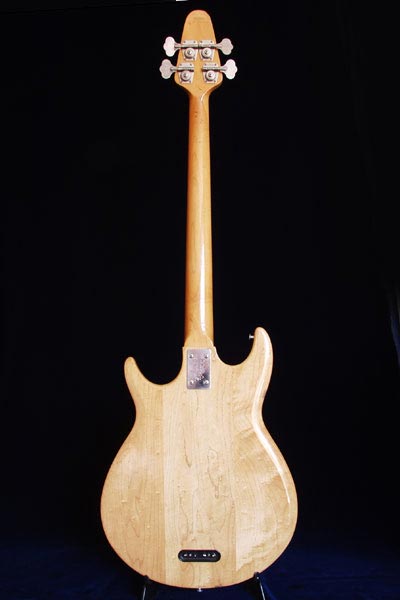
The use of a bolt-on neck was not new to Gibson, as they had made bolt-on guitars and basses previously under their budget
Kalamazoo brand. However Gibson had always regarded this technique as inferior to a set neck, and had resisted using it on Gibson branded instruments, despite the massive success of the Fender bass guitars. The early 1970s, however, were a particular challenging time for the worlds guitar companies, and Gibson finally relented with a number of bolt-on neck models, produced throughout the 1970s.
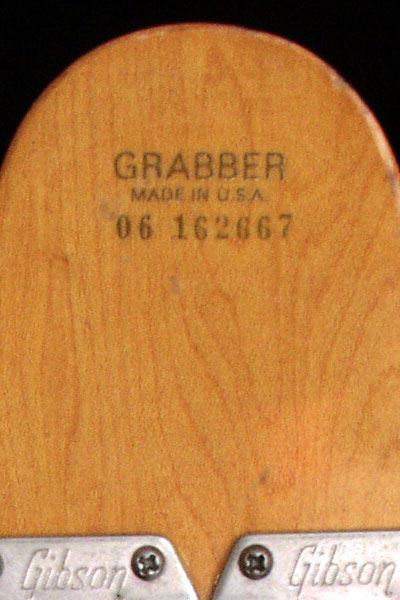
The back of the headstock has a decal, with model designation GRABBER and MADE IN U.S.A. In this case, the serial number's first two digits give the year (06 = 1977). This numbering system was gradually phased in in 1975, but was dropped in 1977, in favour of the stamped eight digit number still in use today.
Read more about Gibson bass serial numbers
here.
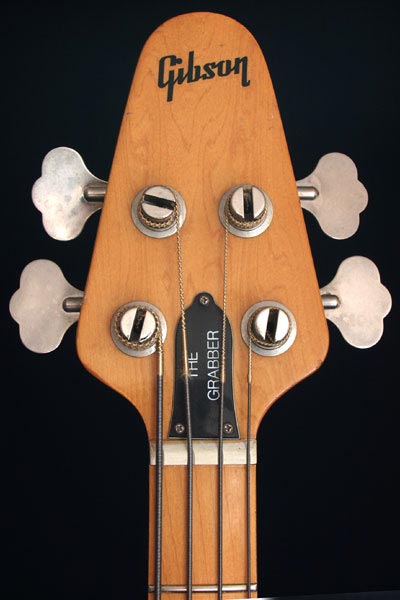
Silk screened Gibson logo in black. The V-style headstock shape was a characteristic of a range of instruments designed by Bill Lawrence in the early/mid 70s: the
Grabber and
G-3 bass, and the
Marauder and
S-1 guitars.
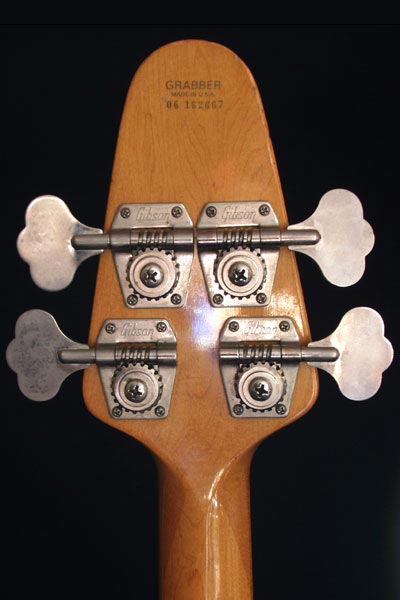
Headstock reverse, with serial number and
Schaller BM machine heads. No volute. The headstock is a separate piece of wood to the neck: the scarf joint can clearly be seen in this picture, just below the headstock
Gibson Grabber wiring
Like many mid seventies Gibsons, pots and output jack are mounted onto the scratchplate. Two controls: volume (part 70-031), and tone (part 70-033), both topped with Gibson speed knobs. These pots are both CTS-made (code 137) with date stamps for 1976 and the final week of 1975.
See the grabber circuit schematic and wiring photographs from this bass.
The Grabber has a string-through body, requiring extra-long scale strings, giving more sustain, but a higher string tension. The bridge can not be top-loaded, ignoring the string-through holes; this was an advantage that the Ripper had, the heavier duty Gibson three-point bridge could be used in either mode.
Gibson Grabber soundclips
The Grabber's single pickup gives a dark 'clank' in the neck position and a brighter 'snap' at the bridge position; but both of these tones are a world away from the stereotypical 'Gibson bass tone' of the 1960s. Gibson had finally given up on trying to make their basses sound like an upright acoustic, and had given the rock and funk crowds something they wanted. This was largely achieved by a longer scale, a bolt-on neck and a movement towards maple from mahogany.
The following sound clips are recorded directly into a computer soundcard. Recorded with flat wound strings, volume and tone controls on full. With a set of roundwounds this bass can really sizzle!
Pickup towards the neck. Played fingerstyle.
Pickup towards the bridge. Played fingerstyle.




